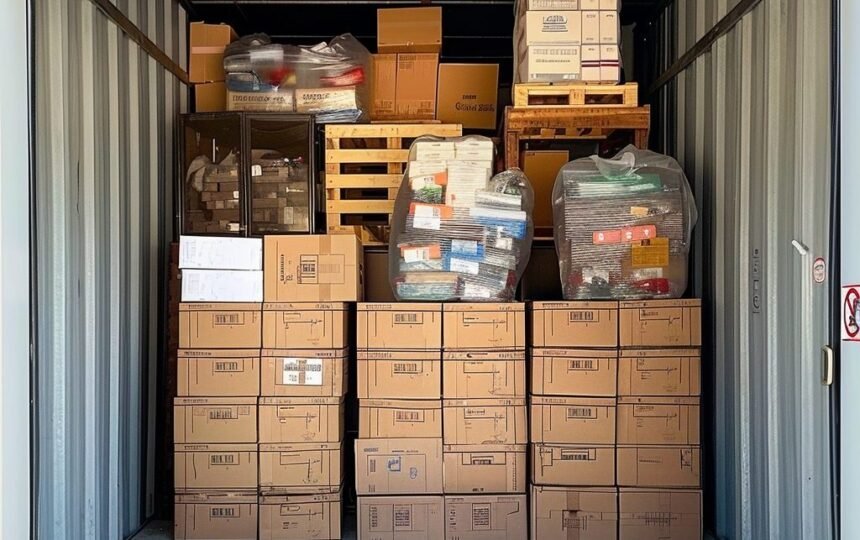Packing a storage unit effectively can save you time and frustration later. Start by assessing what you really need to store and select the right size unit. Once you’ve gathered your supplies, it’s crucial to sort your items thoughtfully. But there’s more to it than just throwing things into boxes. Understanding how to make the most of your space and protect your belongings is essential. Let’s explore the best strategies to ensure your unit is organized and accessible.
Assess Your Storage Needs
Before you start packing your self-storage unit, it’s essential to assess your storage needs to ensure you choose the right size and type of unit.
Think about what items you plan to store and how much space they’ll require. Create an inventory list to visualize your belongings and avoid overestimating your needs. Remember, the cost of renting a storage unit varies with size and amenities, so being precise helps you budget effectively.
Also, consider whether you need storage unit renters insurance; it can protect your items in case of unforeseen events.
Choose the Right Size Unit
Selecting the right size unit is crucial for maximizing your storage space and budget. Start by evaluating what you need to store.
A small unit, like a 5×5 or 5×10, is ideal for a single room’s worth of items, while a medium unit, such as a 10×10 or 10×15, can accommodate up to three bedrooms. If you have more belongings, consider a large unit, like a 10×20, which can hold five or more rooms.
Gather Packing Supplies
As you prepare to pack your self-storage unit, gathering the right packing supplies is essential for keeping your items safe and organized.
Start with sturdy boxes in various sizes to accommodate different items. Don’t forget packing tape—securely sealing boxes prevents accidents. Bubble wrap or packing paper will protect fragile items, while furniture blankets help shield larger pieces. Label each box clearly to make unpacking easier later on. You’ll also want to invest in quality markers for writing labels. Additionally, consider using plastic bins for moisture-sensitive items, and a dolly can make transporting heavy loads a breeze.
With the right supplies on hand, you’ll ensure your belongings stay safe and well-organized in your storage unit.
Sort and Organize Your Items
Once you’ve gathered your packing supplies, it’s time to sort and organize your items for storage.
Start by categorizing everything—group similar items together, like seasonal decorations, furniture, or clothes. This way, you’ll know exactly where to find things when you need them. Next, decide what you really want to keep and what you can let go of. Donating or selling items you no longer use will save space and make the process smoother. As you sort, think about how you’ll pack these items. Consider disassembling larger furniture to make it easier to fit in your unit.
Finally, create an inventory list to keep track of what you’re storing, ensuring you don’t forget anything important.
Label Your Boxes Clearly
While packing your self-storage unit, you can’t overlook the importance of labeling your boxes clearly. This simple step saves you time and frustration later.
Make sure to label each box on at least two sides, so you can easily identify its contents from different angles. Use a permanent marker or printed labels for better visibility. Include a brief description of the items inside, and consider adding categories like “kitchen,” “clothes,” or “books.”
If you’ve got fragile items, mark those boxes clearly as well. Creating an inventory list can also be helpful; keep it accessible for quick reference.
Optimize Space with Stacking
Labeling your boxes clearly sets the stage for efficient packing, but optimizing space with stacking is where you can really maximize your storage unit’s potential.
Start by placing heavier boxes on the bottom; this keeps your stack stable and prevents damage. Use uniform box sizes whenever possible to create a neat, organized look. Consider stacking vertically, utilizing the height of your unit, and leave pathways for easy access. If you have furniture, disassemble it to save space, and stack parts together.
Fill gaps with smaller items or soft goods like blankets or pillows. Remember, balance is key—avoid overcrowding any section to maintain stability.
Protect Fragile Items
Protecting fragile items during storage is crucial to ensure they remain intact and undamaged. Start by wrapping each delicate piece in bubble wrap or packing paper. Secure these wrappings with tape, but don’t make it too tight; you want to avoid causing any pressure damage.
For added protection, use sturdy boxes and label them as “fragile” to remind yourself and others to handle them with care. Place heavier items at the bottom and lighter ones on top to prevent crushing. If you’re storing glass or ceramics, consider using dividers or foam inserts to keep them separated.
Finally, avoid stacking boxes too high, as this could lead to tipping or falling, risking damage to your precious belongings.
Create an Inventory List
After ensuring your fragile items are well-protected, it’s time to create an inventory list of everything you’re storing.
Start by writing down each item, categorizing them if necessary, like furniture, electronics, or seasonal decorations. This not only helps you remember what you have, but also aids in locating specific items later. Include details such as the condition of each item and any special handling instructions. You might want to take photos for visual reference.
Keep this list in a safe place, like a digital document or a printed copy, so you can easily access it whenever needed. An organized inventory will save you time and stress when you need to retrieve your belongings.
Utilize Vertical Space
To maximize the space in your self-storage unit, consider utilizing vertical space effectively.
Start by stacking boxes and bins on top of each other, making sure to place heavier items at the bottom for stability. Use shelving units to keep items organized and easily accessible. Instead of leaving the floor cluttered, think about how high you can go.
When packing, fill every available nook—consider using the tops of furniture or larger items as additional storage surfaces. You can even hang items like bicycles or tools from the walls, freeing up floor space.
Consider Climate-Controlled Storage
If you’re storing valuable items or sensitive materials, you should seriously consider climate-controlled storage. This type of unit maintains a consistent temperature and humidity level, typically between 55-85°F, protecting your belongings from extreme conditions.
It’s especially important for items like wooden furniture, electronics, and artwork, which can be damaged by heat or moisture. Additionally, many climate-controlled facilities offer enhanced security features like smart locks and surveillance systems, ensuring your items remain safe.
While these units may cost a bit more, the peace of mind and protection they provide can save you money in the long run by preventing damage.
Conclusion
Packing your self-storage unit doesn’t have to be overwhelming. By assessing your needs, choosing the right unit, and organizing your items, you’ll make the process smoother. Don’t forget to label your boxes and protect fragile items. Keeping an inventory list will save you time when you need to retrieve something. Utilize vertical space to maximize your unit, and consider climate control for sensitive items. With these tips, you’ll pack your unit efficiently and access it easily later on.








